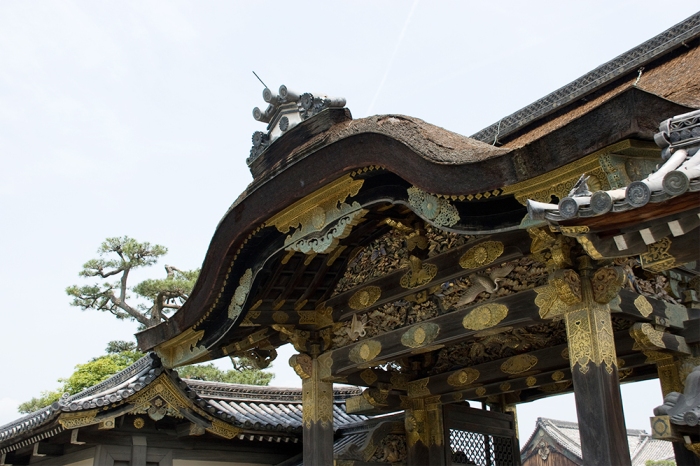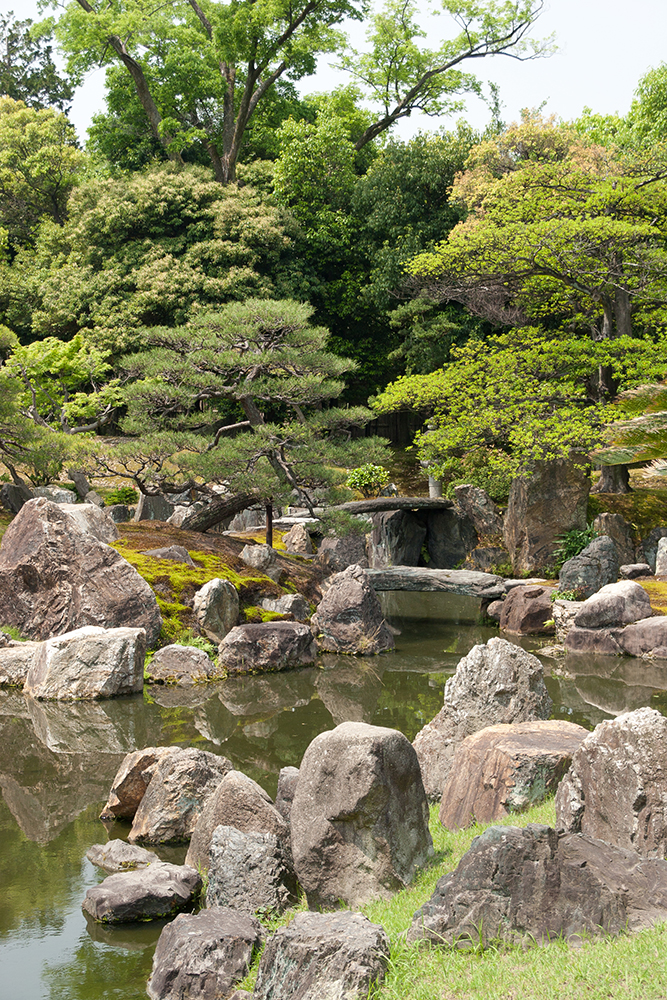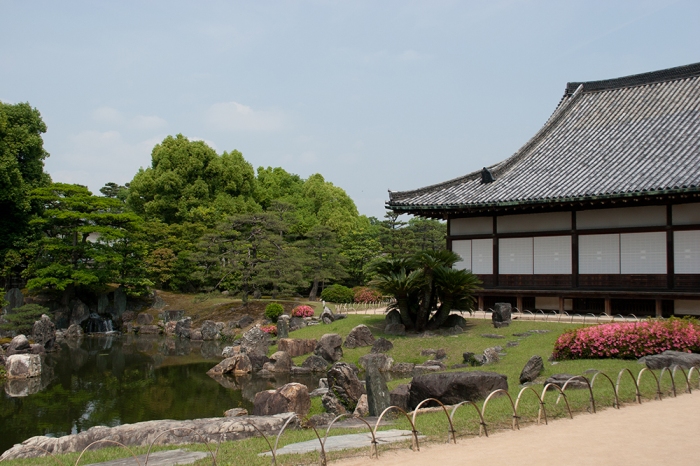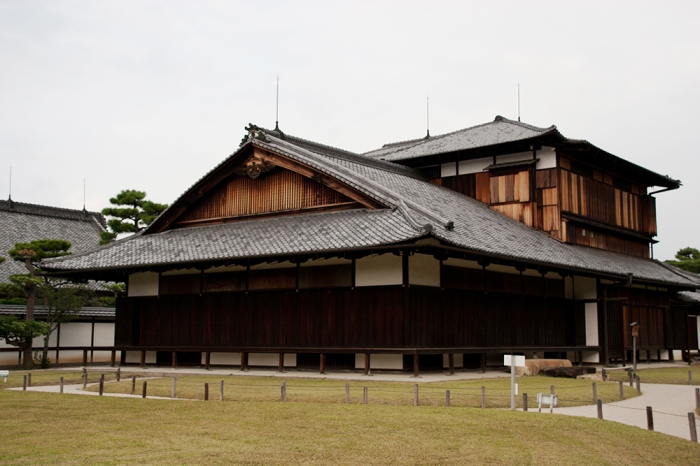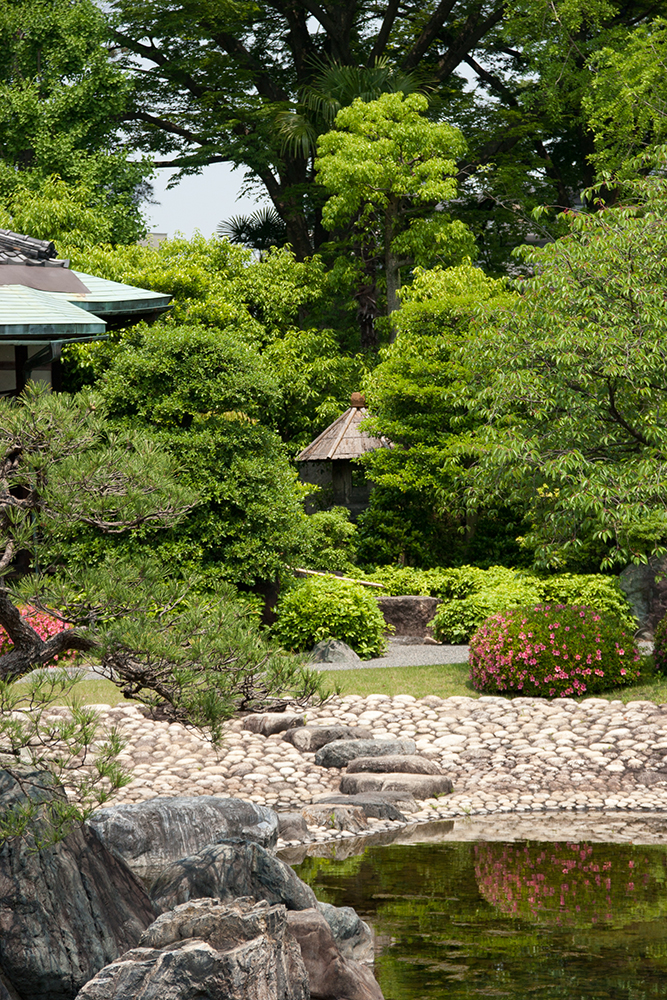Tokugawa Ieyasu irrevocably changed Japan’s political landscape, seizing power from Toyotomi Hideyori and unifying the country under his newly-established Tokugawa Shogunate. This ended the tumultuous Azuchi-Momoyama period and ushered in the Edo Period – just over 250 years of contiguous Tokugawa rule.
Ieyasu needed a castle in Kyoto, and so Nijōjō (jō means “castle”) was built in 1603 as his personal residence, co-opting the previous location of Oda Nobunaga’s private villa. The location chosen was on a stretch of flat land rather than a mountain – this practice wasn’t uncommon for administrative castles, but as Ieyasu himself would be living there for much of his time, the design of Nijōjō incorporated two sets of walls and moats rather than a single layer.
The central palace is Honmaru, and has its own gardens and defences. The outer ring is Ninomaru, which also has a palace, gardens, and more defences. Nijō was never attacked, so these defences never faced any test, but it wasn’t an uncommon design for flatland castles, and had proven effective in other locations.
Once the Tokugawa shogunate was “permitted” to hand power back to the Emperor in 1868, it was only a year later that Tokugawa Yoshinobu signed a formal declaration which did so, and Nijōjō became Imperial property. Edo was renamed Tokyo and finally became Japan’s new capital city (having been the seat of political power for over two hundred years, Kyoto had still been the official capital the whole time). Thankfully Nijō became the home of the Imperial Court, which saved it from the destruction Emperor Meiji demanded of the majority of the country’s feudal castles.
Of course, it’s still had its mishaps. Fire, the ever-present enemy of wooden structures, claimed the donjon (central keep) in 1750 and the entire Honmaru Palace in 1788. Many of the buildings are completely extant, though, rendering the castle and its two palaces absolute must-see for visitors to Kyoto.
Meiji had as much of the Tokugawa symbolism removed as was physically possible, replacing the clan’s hollyhock mon (crest) with the Imperial chrysanthemum. As you can see in this photo of the Karamon gate, this must have been an awful lot of effort to go through every building, wall, and gate in a castle with two palaces and two sets of defences.
Nijōjō had a pair of tsurigane (temple bells) which were to warn of incoming attack should there be any. One was stationed within the castle walls, but the other was housed Shoshidai Palace to the north-east of Nijō. If an army was coming from Edo, Shoshidai’s bell would toll, and once heard at Nijō its sister would be rung to broadcast the warning. Now both bells are kept within the walls of the Ninomaru.
Ninomaru Palace has its own garden, modelled after the strolling gardens of Kinkakuji and Ryōanji. Other than alterations made during the visit of Emperor Go-Mizunoo in 1626, when an entire temporary palace was erected and rocks moved to give that palace a superior view (both of which were undone once his visit was over), the garden remains identical to its original design.
There are a handful of different paths through the gardens, but all lead around the Ninomaru Palace and onward to the bridge leading into the Honmaru Palace grounds.
The Honmaru Palace is of markedly different architectural style to that of the Ninomaru Palace. As the original Honmaru Palace was destroyed by fire, it was never rebuilt, and the Honmaru Palace you see today is the former palace residence of Prince Katsura, painstakingly relocated to Nijō from Imadegawa – just under two miles northeast of Nijō – in 1893-4.
The Honmaru Palace also has its own strolling garden, without a pond, but still with several pathways and routes. The fires which destroyed the original Honmaru also razed the gardens. The current garden was built around the relocated Katsura Palace, and shows a more Westernised influence, with lawns and topiary.
If you follow the pathway out of the Honmaru’s rear entrance and wander back toward the Ninomaru you will pass the Waraku-an teahouse, situated in the Seiryu-en Garden. Added to the castle grounds in 1965, visitors may participate in a traditional Tea Ceremony (for 1,000円).
The Seiryu-en Garden was the original donjon location, before it was moved as the grounds were expanded. After this, housing for Shogonate officials was constructed, but once the castle became Imperial property the ground lay unused until the construction of the tea-house.
The Honmaru Palace interior is not always open to the public, but the Ninomaru is year-round. Regardless of whether you are able to time your visit to gain access to the Honmaru Palace, Nijōjō is well worth your time.
Visiting Nijōjō:
Take the Tozai Subway Line to Nijōjō-mae station. The castle is unmissable.
Admission: 600円.


